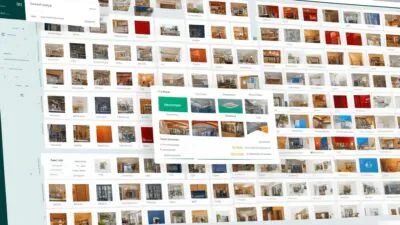FTC disclaimer: This post contains affiliate links and I will be compensated if you make a purchase after clicking on my link.
Dial-up networking technology allows devices like PCs, laptops to connect with internet services via standard telephone lines.
Early 1990’s dial-up internet is the most common form of internet access, but it was replaced with high-speed broadband services today.
How does dial-up internet work?
Dial-up internet uses your existing copper telephone line, where it takes over the signal by changing it from communicating voice to communicating data. It means that it will now communicate data rather than just voice.
That’s why the phone line is busy when you are using the internet, and the same thing happens when you pick up the call, your internet connection will get disconnected.
DSL (Digital Subscriber Line) also uses the same telephone line to transmit data, but its advanced technology allows both data and voice to transmit simultaneously.
Moreover, the amount of data that dial-up internet transfer over the phone line is minimal, which results in very slow speed and doesn’t qualify as broadband.
To get a dial-up connection, you only need a landline and dial-up modem to establish a connection and start sending and receiving data.
When you launch your dial-up service, it will initiate with the handshake protocol by connecting with another modem situated at your ISP to establish a connection.
Firstly, the subscriber connects the dial-up modem with their telephone line and then calls a public access number to connect online.
After that, your home modem connects with another modem belonging to dial-up internet providers. When the two modems mutually agree, and the setting is compatible, then they start exchanging traffic.
The exchange of traffic will continue till the time one of the modems gets disconnected.
Moreover, you can access a dial-up connection from anywhere where the phone line is available.
Advantages of dial-up internet
Widely available
Dial-up internet uses the phone line for internet access, and most of the homes are connected with telephone phone lines, so it would be easy to access dial-up internet.
Moreover, one thing you need to ensure that your dial-up provider has at least one local access number in your area so that it won’t charge you for long-distance.
Because dial-up internet is widely available, it is a good option for at least 6% of Americans and 25% living in rural areas who don’t have access to broadband technologies like DSL, Cable, or Fiber-optic. Also, they can’t afford to have satellite broadband connections because it is expensive.
Low prices
Dial-up internet service is cheaper compare to broadband technologies. Also, you may find it is free in some areas for a few hours every month.
It is a good option for those on the tightest budget and who want to get online and connect via email or social media.
Strong security
The dial-up connection uses a different IP address each time you log on and start using the internet. So, it makes it difficult for hackers or somewhat virtually impossible to spoof your dial-up connection for criminal activity or misdeeds.
Another factor contributing to strong security is that the dial-up connection is not always on, unlike a broadband connection. So, when you are not logged in, no one will be able to hack your connection.
Disadvantages of dial-up internet
Slow speed
Dial-up connection speed is significantly low, which doesn’t account for more than 56 Kbps. In contrast to the slowest DSL connections, you won’t get less than 1 Mbps speed in the market.
When the dial-up connection was prevalent, the webpages are available in low-resolution clipart. Now, dial-up internet can’t cope with high-resolution photos, HD video streaming, and immersive games.
Although you may be lucky to load Facebook lite version with dial-up internet.
Load timeouts
Most of the webpages on today’s internet are designed to be downloaded via a broadband connection.
But, if the dial-up internet can’t load a web page fast enough, then the page might show a timeout message, and you can’t fully access the web page.
Unavailability of equipment
To get access to dial-up internet, you have a phone line and a special dial-up internet modem, which is currently hard to find.
Use of phone line
The dial-up internet engages your phone line, making it difficult to make or receive phone calls when you are online.
Is dial-up internet service still available?
Yes, you can still get dial-up internet in your area from a few providers. You only need to have a phone line and the right equipment for a dial-up modem.
Although this is a great option for those living in a rural area where there is no DSL availability, Cable modem, or fiber optic and the satellite broadband would cost them more.
Some of the dial-up internet providers are:
- AOL: the starting price is $20/month ( at the same price range, you will also get DSL broadband)
- Earthlink: plan starts with $9.95/month
- Juno: free for 10 hrs/month
- NetZero: free for 10 hrs/month
- People PC: starting with a $10.95/month plan
- Turbo USA: plan starts with $12/month
Dial-up vs. DSL: What is the difference
The similarity in both Dial-up and Digital Subscriber Line (DSL) technologies is that both use a telephone line to access the internet.
Moreover, DSL uses advanced digital signal technology that makes its speed 100 times faster than dial-up internet.
Also, it allows DSL to use both the internet and voice service simultaneously because of very high signal frequencies.
In contrast, when a dial-up connection uses the phone line for internet service, you cannot use the voice service.
Additionally, the dial-up network uses the protocols like Point-to-Point Protocol (PPP), which was later updated to PPP over Ethernet (PPPoE), which is used by DSL (Direct Subscriber Line).











